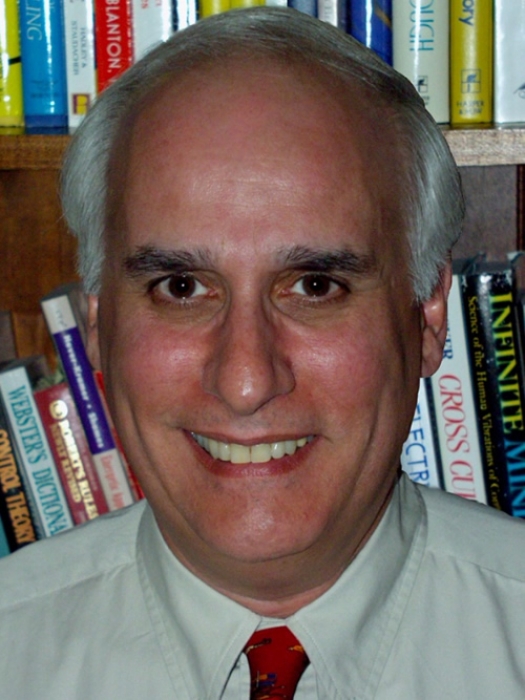fredgallo.jpg

Fred Gallo, PhD
It’s been 16 years since I introduced the term Energy Psychology with my book by the same title; however, actually I introduced the term in seminars that I presented prior to that time. Some people have been concerned as to why I chose the term Energy Psychology, since it may restrict its usage to people with appropriate licensure. However I would like to assure you that restricting usage has never been the intention and many professionals employ psychological research and principles in the course of their professions. This applies to not only psychologists and psychiatrists, but also counselors, physiotherapists, chiropractors, massage therapists, social workers, physicians, managers, you name it. Even attorneys employ psychological principles in jury selection, and politicians utilize psychological principles to win elections and to convince their constituents. Anytime human interaction is involved, psychological principles can come to bear. However it is correct that only appropriately licensed professionals can refer to themselves as psychologists. Some prefer the terms Energy Therapy, Energy Psychotherapy, and Energy Medicine. Whatever floats your boat.
In my view, Energy Psychology is a theoretical position predicated on the understanding that energy is involved in psychological functioning. That is to say, while neurologic, biochemical, genetic, cognitive, environmental, psychodynamic, and systemic factors are involved in behavior, at the most fundamental level energy is involved. This also applies to our functioning in general. However, some may question the pragmatics of this position, since it’s easy to see that affecting behavior change through cognitive and specific behavioral adjustments are readily applicable. But where does energy come to play?
My initial thought was that since certain approaches to Energy Psychology involve stimulating acupuncture meridian points, we are inducing kinetic energy into the system and promoting the flow of ever-so-elusive chi or prana. I personally believe that there are meridians and that there is research support for their existence. Of course, not everyone agrees. The most visible things are nerves and the nervous system as a whole, and whenever changes occur through the application of EP techniques, brain changes occur as well. Also cognitive and emotional changes occur and we can be assured that chemical changes and changes in gene expression occur in addition to improvement in heart rate variability. The physical effects appear to be evident and I propose that underlying all of this is a change in the flow, vibration, intensity, and quality of energy. And the energy is electromagnetic and subtle as well.
In addition to focusing on energy, EP also involves consciousness. My position is that energy, consciousness, and thought are three principles that account for psychological functioning and psychological treatment. Tuning into a psychological issue often requires thinking about it and engaging consciousness. At the same time, energetic effects occur which are observable in the way one feels. When this matrix is engaged, exposure is occurring and in the most ideal sense, mindful observing is occurring that also affects the flow and vibration of energy. This is then facilitated via stimulating acupoints, chakras, biofields, and even by using techniques such as making specific statements, talking to ones organs, etc. I also believe that in concert with this mindful observing, it’s important that the client and the practitioner apply these processes from a position of not trying “to get rid of” the issue, not trying too fervently to change it. This is a delicate balance, since you would obviously not apply these techniques without some level of intention to change things. Alternatively, a mindful position could simply involve statements such as, “Hey let’s tune this in and see what happens when we tap. Let’s see where it takes us.”
When treatment involves stimulating acupoints, there are several ways to go about this. One way is to use an algorithm that is a set sequence of treatment points designed to treat various issues. This is partly consistent with the five elements theory, that different meridians are involved with different emotions. From another perspective you can use the Midline Energy Treatment (MET), Emotional Freedom Techniques (EFT), or another comprehensive algorithm in conjunction with tuning in to different aspects of the problem, including counter-intentions (read “psychological reversal”). At the most sophisticated level, the application of energy diagnostics makes it possible to tailor treatment to the individual. This can involve muscle testing, but there are other ways to effectively diagnose as well. However, a higher level of proficiency is needed to apply energy diagnostics, and not everyone obviously agrees that this approach is necessary. I don’t have the time to go into the specifics on energy diagnostics; however, let me refer the reader to my book Energy Diagnostic & Treatment Methods for greater details.
MET with Layering
I’d like to offer one technique that I find especially helpful that does not require energy diagnostics and I would like to suggest that the reader give it a try. This is the Midline Energy Treatment (MET) with Layering. Initially I referred to the basic process as the Negative Affect Erasing Method (NAEM), but it’s been expanded and deepened since it was introduced in my 1998 book, “Energy Psychology”. The treatment points involve Governing Vessel (GV) 17 or back of the head, GV-20 or top of head, Third Eye Point or forehead, GV-26 or under nose, Central Vessel (CV) 24 or under bottom lip, and Thymus point (CV-20) or center of the chest. The process involves having the client attune the issue, rate the SUD level 0-10, and mindfully observe while tapping those points. After the six points have been tapped, another SUD rating is taken. After this, assessments are taken after each of the following layers: holding the points and taking a breath, imagining tapping the points, imagining holding the points and taking a breath, having the client observe the therapist or someone else tap on themselves for the client, and perhaps even the client tapping the treatment points on a doll. This is an effective means of reinforcing the treatment and stimulating energy, the brain, and different perspectives. Psychological reversal corrections can also be used as needed. Additionally, after alleviating the stress, I generally like to install a positive state by having the client think about a desired outcome and tapping the back of hand (Triple Warmer 3) while visualizing and/or languaging the outcome.
©2014 Fred P. Gallo, PhD, President-Elect of ACEP. Used with permission.
Originally published on the ACEP EP Blog, March 3, 2014. Used with permission.


